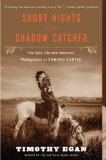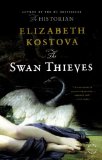Summary | Excerpt | Reading Guide | Reviews | Beyond the book | Read-Alikes | Genres & Themes | Author Bio

A Novel
by Marianne WigginsThe Shadow Catcher dramatically inhabits the space where past and present intersect, seamlessly interweaving narratives from two different eras: the first fraught passion between turn-of-the-twentieth-century icon Edward Curtis (1868-1952) and his muse-wife, Clara; and a twenty-first-century journey of redemption.
Narrated in the first person by a reimagined writer named Marianne Wiggins, the novel begins in Hollywood, where top producers are eager to sentimentalize the complicated life of Edward Curtis as a sunny biopic: "It's got the outdoors. It's got adventure. It's got the do-good element." Yet, contrary to Curtis's esteemed public reputation as servant to his nation, the artist was an absent husband and disappearing father. Jump to the next generation, when Marianne's own father, John Wiggins (1920-1970), would live and die in equal thrall to the impulse of wanderlust.
Were the two men running from or running to? Dodging the false beacons of memory and legend, Marianne amasses disparate clues -- photographs and hospital records, newspaper clippings and a rare white turquoise bracelet -- to recover those moments that went unrecorded, "to hear the words only the silent ones can speak." The Shadow Catcher, fueled by the great American passions for love and land and family, chases the silhouettes of our collective history into the bright light of the present.
When categorizing books by genre for BookBrowse I have been struck by the thought that a novel is simply a name for a book that doesn't fit neatly into any one genre. The Shadow Catcher is such a "novel" - combining two parallel storylines, one historical fiction, one contemporary; plus a dollop of autobiography, art criticism (supported by 30 interleaved photos) and travelogue. The result is an intelligent novel that defies categorization...continued
Full Review
(531 words)
This review is available to non-members for a limited time. For full access,
become a member today.
(Reviewed by BookBrowse Review Team).
Marianne Wiggins was born in Lancaster, Pennsylvania in 1947. Her father, a farmer, preached in a conservative Christian church founded by her grandfather. She married at 17 and shortly after gave birth to a daughter, Lara, who she brought up on Martha's Vineyard (Lara is now a professional photographer in Los Angeles and took the jacket and author photo for The Shadow Catcher). Wiggins's first book was published in 1975 but it wasn't until 1984 with the publication of Separate Checks that she ...
This "beyond the book" feature is available to non-members for a limited time. Join today for full access.

If you liked The Shadow Catcher, try these:

Short Nights of the Shadow Catcher
by Timothy Egan
Published 2013
How a lone man's epic obsession led to one of America's greatest cultural treasures: Prize-winning writer Timothy Egan tells the riveting, cinematic story behind the most famous photographs in Native American history -- and the driven, brilliant man who made them.

by Elizabeth Kostova
Published 2010
Kostova's masterful new novel travels from American cities to the coast of Normandy, from the late 19th century to the late 20th, from young love to last love. The Swan Thieves is a story of obsession, history's losses, and the power of art to preserve human hope.